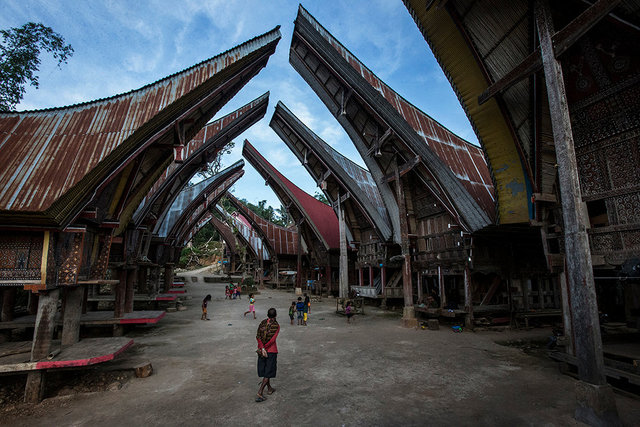
The island of Sulawesi, Indonesia has a little known secret: how the villagers handle their dead. Both the Tongkonans (pictured on the right) and the rice barns (on the left) are used in death rituals.
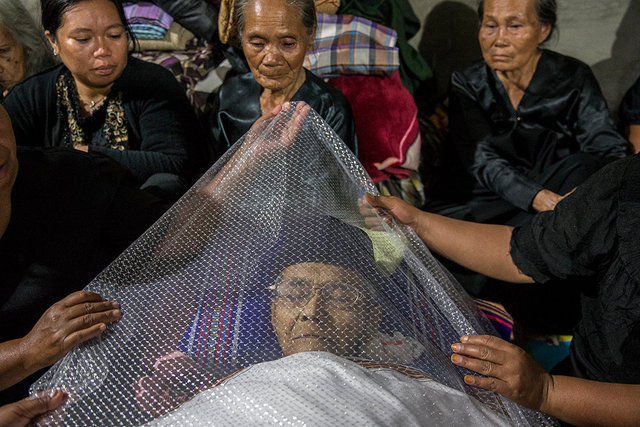
The bodies of the dead are brought into the family's home for friends and family to visit.
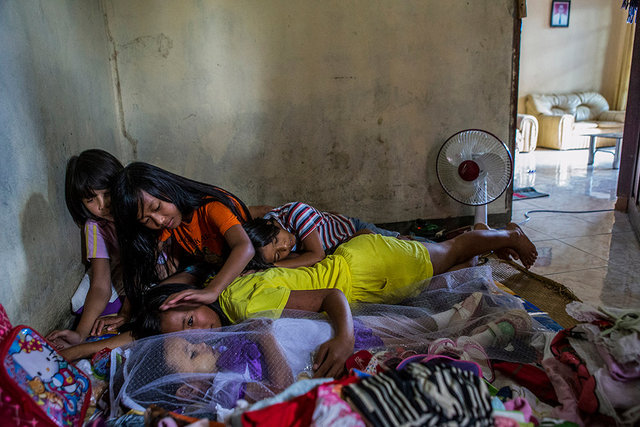
The cousins and sister hug the body of a three-year-old girl who died the day before. Thinking the girl is just sick, the children present her with toys and tell her stories.
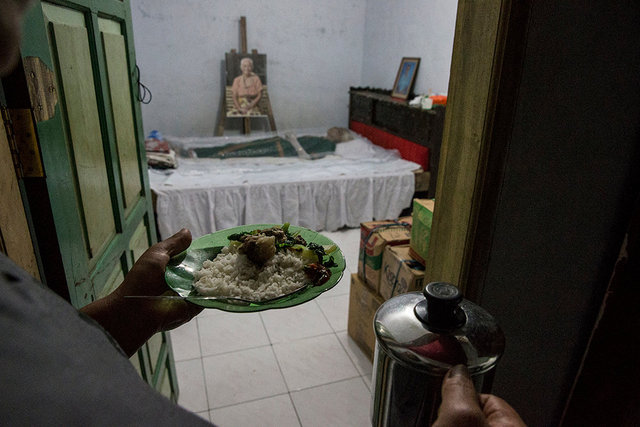
Families place their dead and decomposing loved ones in the bedrooms they slept in while alive. Three to four times a day, they bring the body its favorite meals.
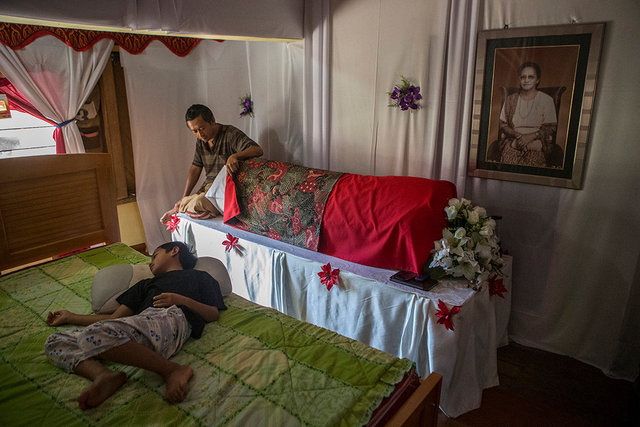
The body is then wrapped up and placed in the corner of the home, where it sits for months or years as the family plans a funeral.
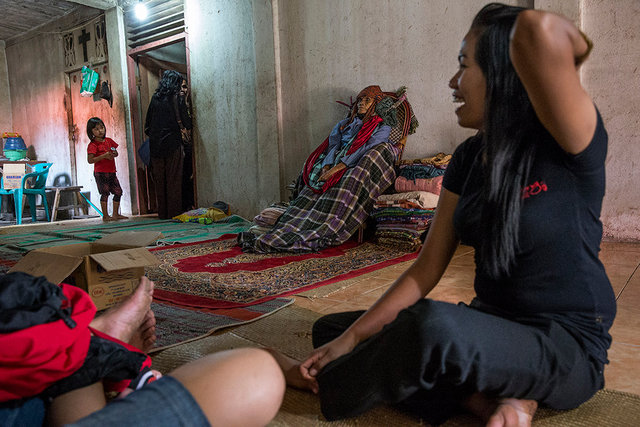
For the wealthiest villagers--the top 1 percent--the dead body is sat up in a chair for three days and three nights as a sign of respect.
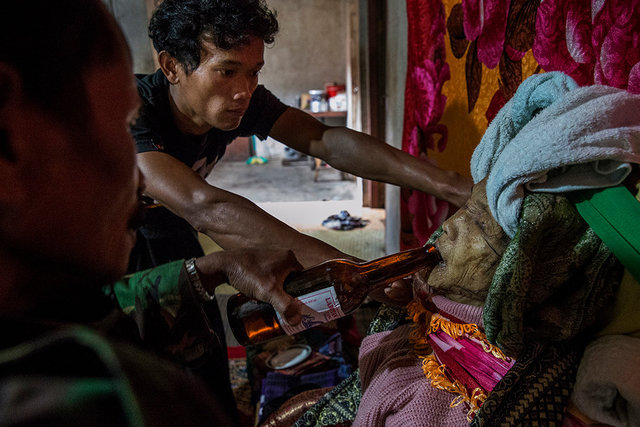
To preserve the body, alcohol is poured into the mouth, eyes, ears and nose.
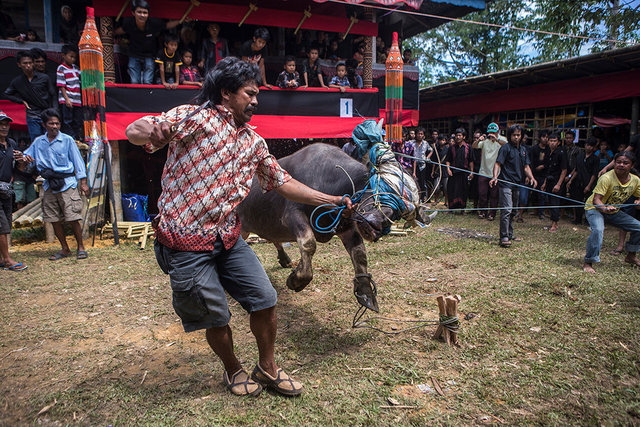
The family member is not considered officially dead until the first water buffalo is slaughtered in the person's honor.
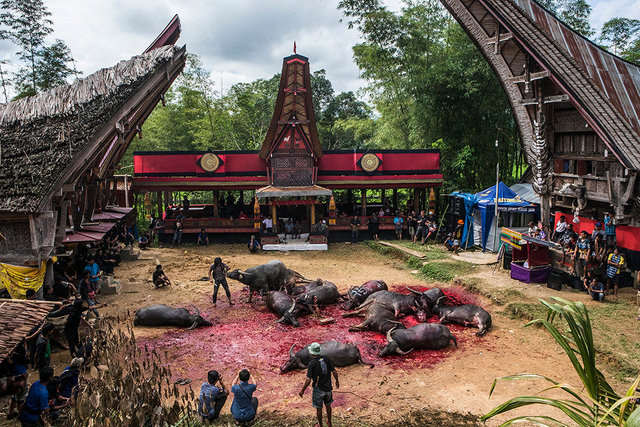
For the wealthy, a minimum of 24 water buffalo are slaughtered. Some funerals involve the killing of many more.
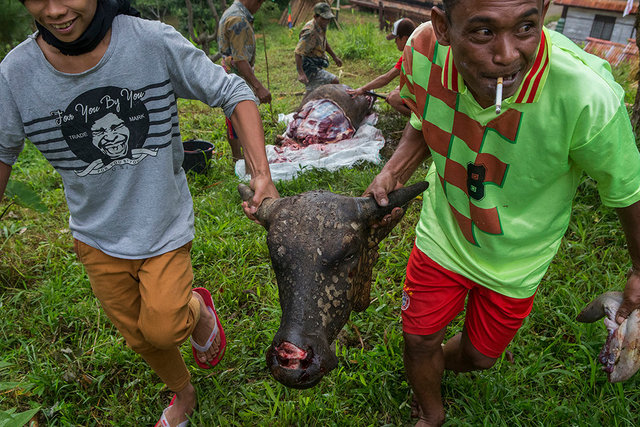
Every water buffalo born in Toraja are destined to be slaughtered. Some are sold for more than $50,000.
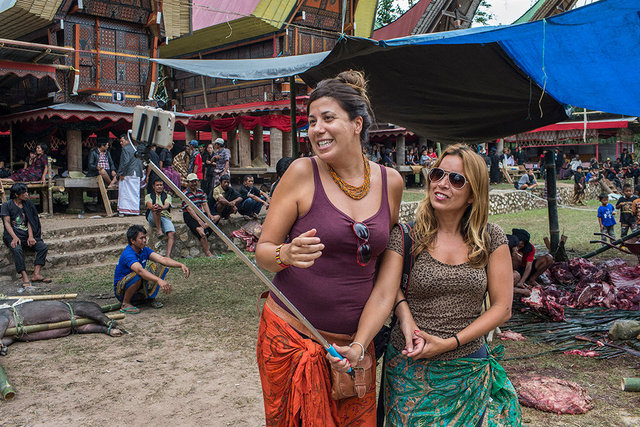
Tourists come from across Australia and Europe to witness the traditional funeral practices.

The smallest graves--the ones for the still born babies and infants who die before teething--are carved into the sides of tree trunks.

Wealthy families often purchase and decorate wooden effigies to resemble their late loved ones.

The wooden funeral effigies are often stolen and sold in underground art markets around the world.
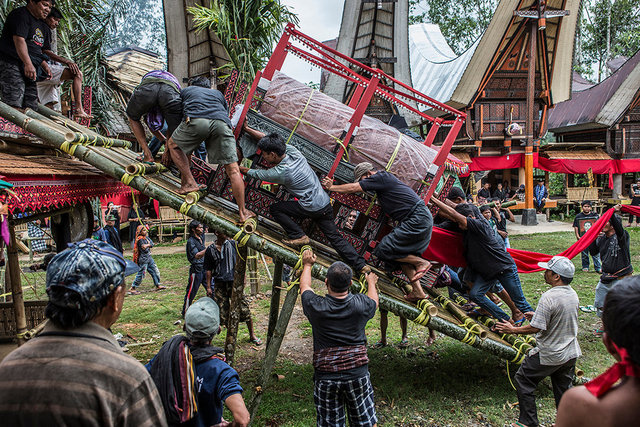
Upon the beginning of the five-day funeral ceremony, the body is hoisted up into a tower.
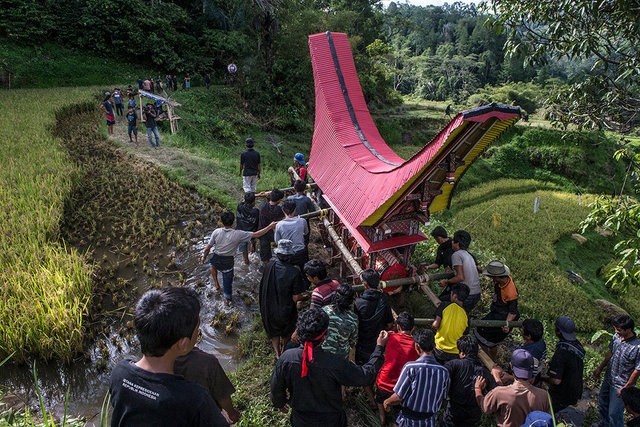
At the end of the five day funeral ceremony your body is carried a few hundred yards away or sometimes many miles to the burial spot.
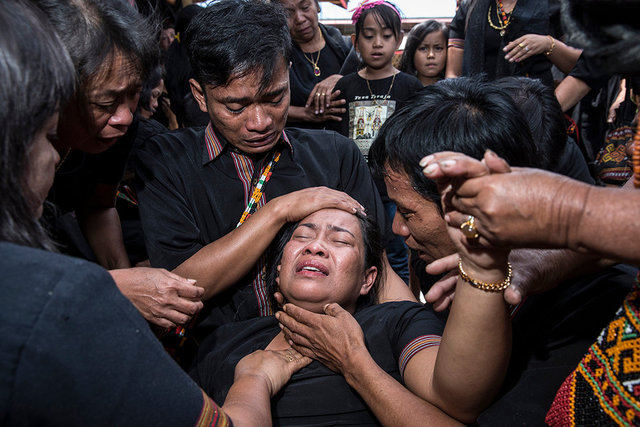
On the day of the burial, the families finally say goodbye.

In Toraja, one never truly dies. During the Ma'Nene, the body is brought back out of the grave for a visit with family.
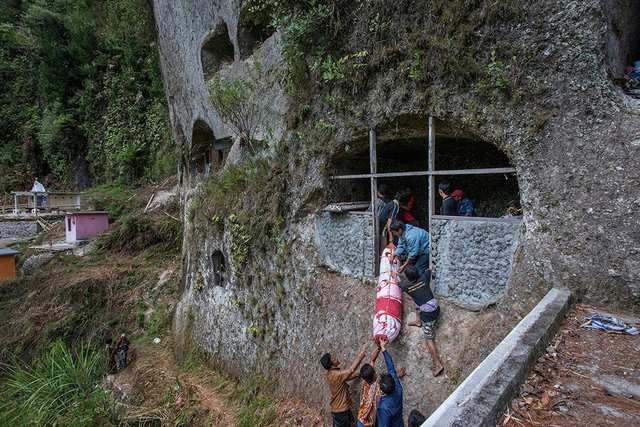
Some graves are carved into the sides of mountains near Toraja.

Because the body is still in good condition, family members prop it up and pose for a Facebook photo.
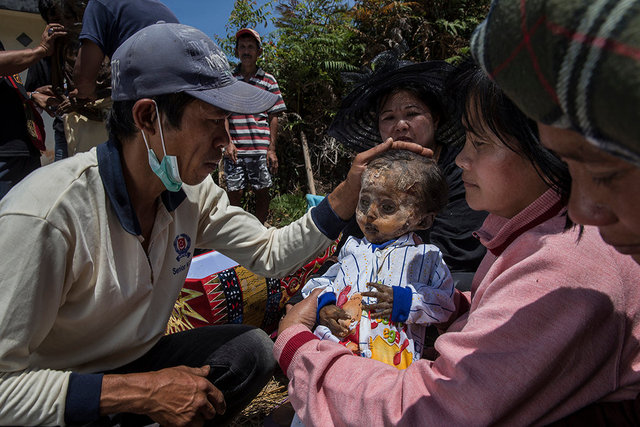
At the funeral, family members gather to tell stories and share memories. These people are talking to the dead toddler as he were alive.
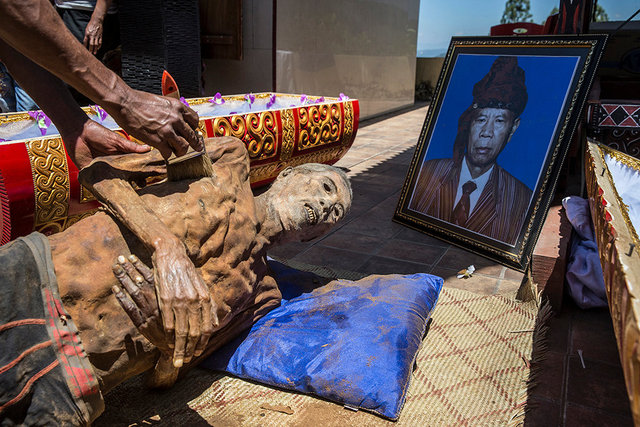
Before burial, the body is dusted off and given a new set of clothes. This man had been dead for three years. His family members said they were pleased with his appearance.
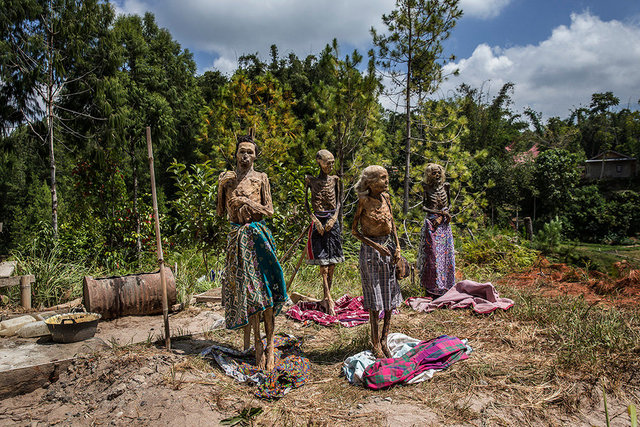
Bodies are propped up to a standing position and left to dry in the sun.
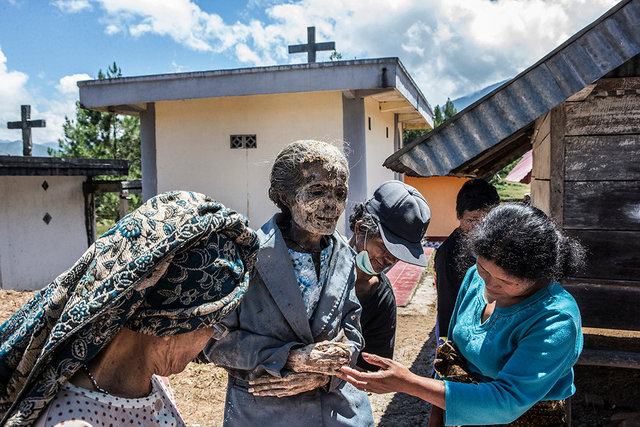
Many of the funerals include Christian prayers and readings from the Bible--the legacy of Dutch missionaries. The spreading of modern Christianity and Islam in the area are threatening Toraja's ancient funeral practices. The time-honored death culture in this area is nearly extinct.